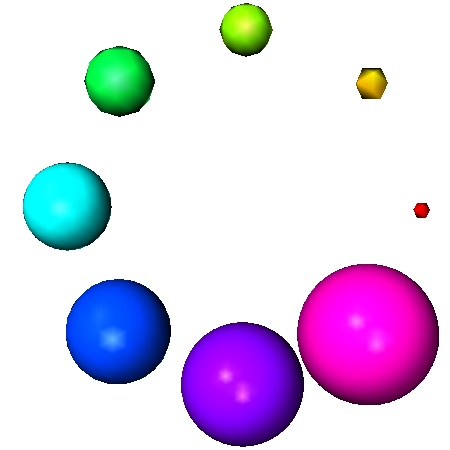Archive for the '3d' Category
Friday, November 10th, 2006
for viewing the applet you need Java 1.5 or higher, please wait for the blue star.
- left click and drag – rotate
- middle mouse and drag – translate
- ctrl middle mouse and drag – zoom
- e – encompass
Today the DMV (german mathematician comunity) awards their media prizes to journalists for special archivements in communicating mathematics in the public. Besides the media prize (4000 euros) for George Szpiro (Jerusalem) and the journalists prize (1000 euros) for Ulf von Rauchhaupt (Frankfurt) a very special honor is given to Hans Magnus Enzensberger: The implicit surface given by the above equation was named after him.
Details about the prizes the winners and the ceremony here, an image of the surface from the press release here.
posted by timh | 3d, architecture, math | No Comments »
Wednesday, November 8th, 2006
Way back in the beginning nineties the math department had a graphics supercomputer: (more…)
posted by timh | 3d, software, visualization | No Comments »
Friday, November 3rd, 2006
I finally managed to translate my article for the conference proceedings of the NMI2006 conference from german into english. There are a few additions, which are not included in the german version.
The article is a description of our installation seidesein. It gives an account on our motivations for creating seidesein but it explains a bit also our motivation for other daytar works.
The article is for download >>here or directly via the seidesein page.
I am very grateful for any feedback on this article.
posted by nad | 3d, animation, architecture, art and design, berlin, communication, computer vision, dance, Film, games, math, music, perception, physics, software, trips, visualization | No Comments »
Tuesday, October 31st, 2006
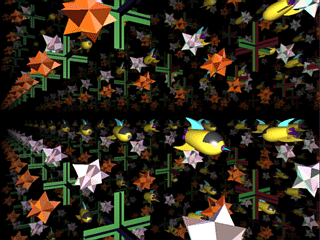
Today I am digging out a historical milestone in mathematical visualization.
(more…)
posted by nad | 3d, animation, math, perception, physics, trips, Uncategorized | No Comments »
Monday, October 30th, 2006
When Matthew Barney spoke on saturday (see last post) about screens in rooms and the attraction they emanate, I was immediately getting this eerie video by Guthrie Lonergan in my head. It displays empty work places/home entertainment centers, fake and cheap strings and the empty virtual world behind the screen.
It was posted last friday on rhizome (via Tom Moody) by Marisa Olson.
posted by nad | 3d, communication, Film, perception, Uncategorized | No Comments »
Friday, October 20th, 2006
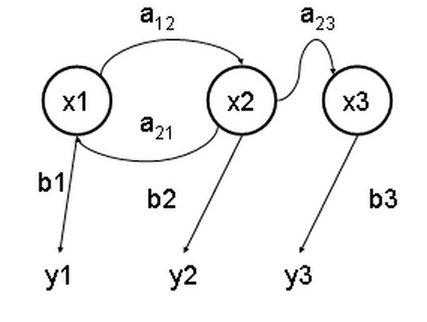
A hidden Markov model as it usually appears in pattern recognition
Optical character recognition, usually abbreviated to OCR, is computer software designed to translate images of handwritten or typewritten text (usually captured by a scanner or a digitizer) into machine processable text. OCR is e.g. commercially used in PDA’s However “handwritten” characters do not need to be constrained to letters or simple symbols but could also be more complex shapes, if necessary also in 3D. The recognition of such shapes can also be interpreted as gesture recognition.
(more…)
posted by nad | 3d, communication, computer vision, math, perception, physics, software | 1 Comment »
Wednesday, October 11th, 2006
Just a reminder of an earlier announcement about a public appearance of our work seidesein (see also NMI 2006 conference) at the trampoline night of trampoline/radiator festival. I will guard the installation so this blog may be a bit slowed down for the upcoming days.
The Trampoline event takes place on
Thursday, 12. October 2006
20h
Hebbel am Ufer, HAU 2
Hallesches Ufer 32
10963 Berlin
12Euros/8 Euros
posted by nad | 3d, berlin, communication, Uncategorized | No Comments »
Tuesday, October 10th, 2006
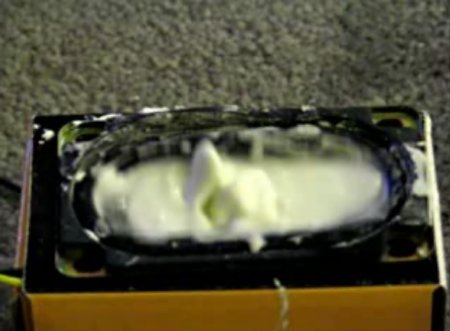
After the diet coke and mentos wave, there seems to be – may be – a new physics hype on youtube – namely the cornstarch and resonance monsters. This video is particular charming.
Remarks:
-I am not sure – but the origin of this goes probably back to this scientific video of the Center for nonlinear Dynamics at the University of Austin.
-the physics is connected to an earlier post called resonance rice and it is actually also a bit related to this earlier reported experiment of a macroscopic double slit experiment.
posted by nad | 3d, music, nano, physics | No Comments »
Friday, October 6th, 2006
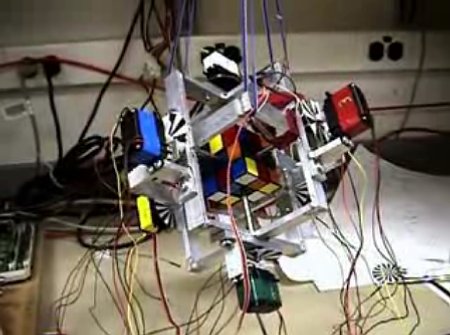
A mathematical procedure has to be applied in order to get a final view onto the object. This time it is not radonge I am thinking about but rubik’s cube. However just as in radonge — rubik’s cube can be solved. And if you are to lazy for that you can use a robot:
watch Rubiks Cube Solver – a beautiful final project of University of Michigans EECS class “Design of Microprocessor Based Systems” by Doug Li, Jeff Lovell and Mike Zajac.
posted by nad | 3d, math, robotics | 1 Comment »
Wednesday, October 4th, 2006
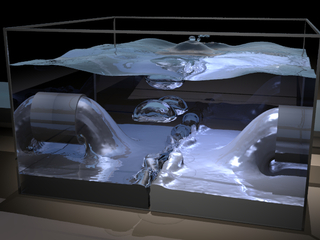
water again: water simulations are cool. However the big question is: WHAT IS A SIMULATION? I.e. at what point do we accept a thing to look physically realistic? Do we want it to look realistic?
(more…)
posted by nad | 3d, computer vision, math, perception, physics, software, visualization | No Comments »

